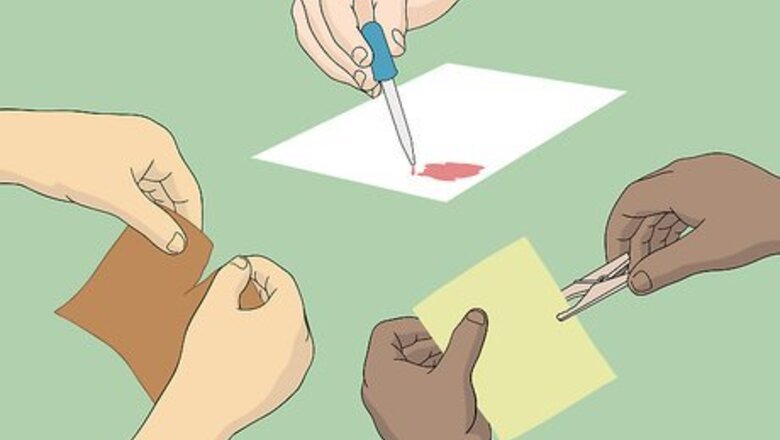
views
Preparing to Teach

Try fine motor skill activities to prepare the child for using scissors. Children need to build fine motor skills before they're ready to use scissors. Here are some activities that can help build the child's skills, and help you know if the child is ready: Precision: Squeezing watercolor paint from an eyedropper onto paper, playing with finger puppets Bilateral coordination: Tearing up paper from the recycling bin Finger and hand strength: Spinning a top, punching holes with a hole punch, playing with squirt guns, using clothes pins
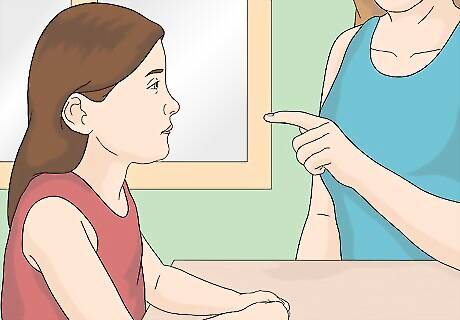
Evaluate the child's ability to follow directions. The child should be able to follow instructions like "stop" or "put it down, please." If a child isn't able to follow safety rules, then they shouldn't be given anything dangerous.
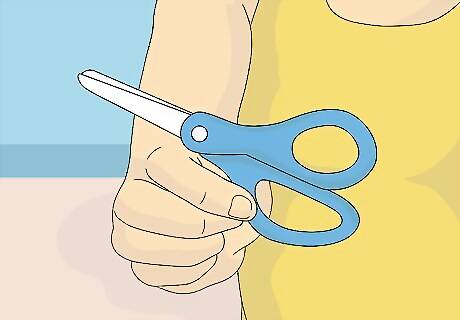
Choose the right pair of scissors. Safety scissors are ideal for young children. Choose right-handed or left-handed scissors based on your child's dominant hand.
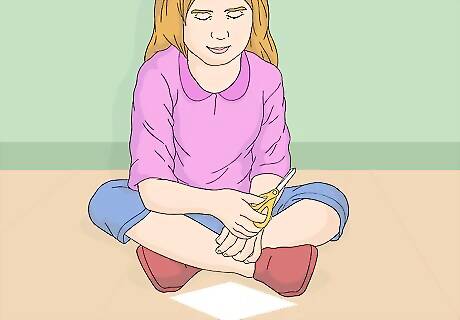
Know that most kids are ready to use scissors around the age of 2 or 3. Many young children are able to use scissors. Talk to an occupational therapist if you think your child is struggling or has a disability that might delay their learning to use scissors. There are adaptive scissors for kids with disabilities, and special techniques to help kids who struggle with scissors. A delay isn't the end of the world. It just means things will happen a little differently.
Teaching How to Use Scissors
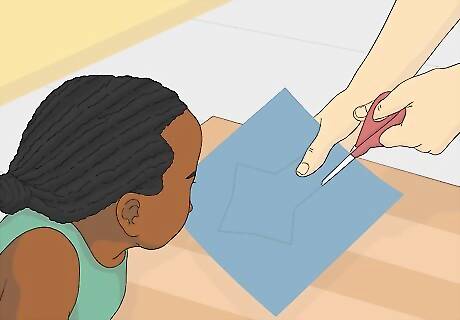
Let the child see you use a scissors. Show them how you do it, and let them watch. If they're curious, then you'll know they're most likely ready to learn.
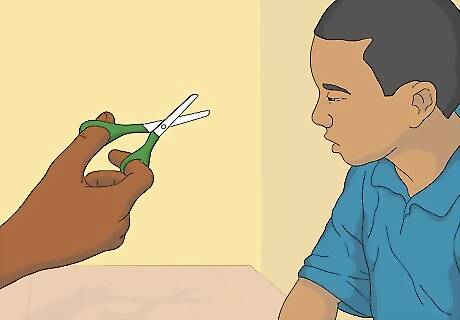
Start with the grip. Show the child in your hand how to hold the scissors, and then have them try to copy it. If they aren't able to alone, help move their fingers and thumb into the right position. Teach them that the thumb always goes in the hole. Draw an eyeball on the small thumb hole and explain that the eyeball will always be on top. Teach them that two fingers in the larger hole. Help them put their index finger and their middle finger in the hole.
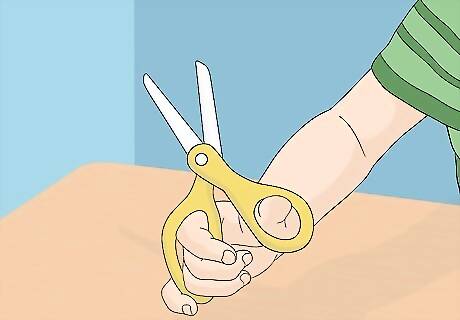
Have the child practice opening and closing the scissors. This practice will help the child build up the strength to control the scissors.
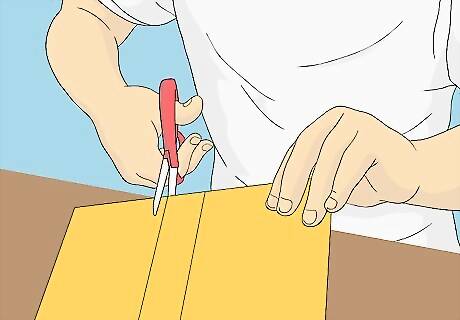
Try having the child do their best to cut in a line or other shapes. Try drawing lines or shapes for the child to cut. After they do it, praise them. (Keep in mind that they may not be very precise yet; they're still young.)

Find ways to make it fun. Let the child be creative. Try letting them cut colored paper, yarn, and other materials. Using scissors can be another way the child works on expressing themselves (all while building essential motor skills).
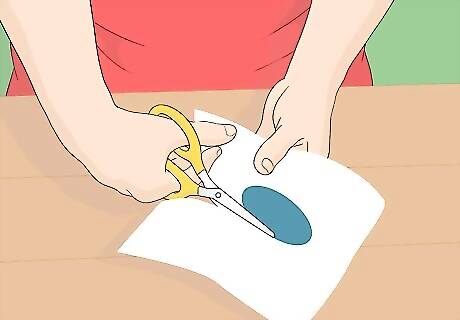
Practice with the child how to turn the paper with one hand and cut with the other. This will prevent the child from turning the scissors up side down. Show the how to move the paper along with shuffling motions so that they maintain control of both the paper and the scissors.
Teaching Scissor Safety
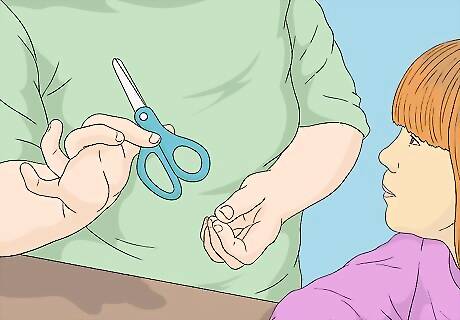
Tell the child that scissors can hurt people if misused. It helps if kids don't just know what the rules are, but if they know why the rules are important. Explain that using scissors the wrong way can result in somebody getting hurt, and that's why the rules matter. Tell them that as long as they are following the rules, they don't have to worry.
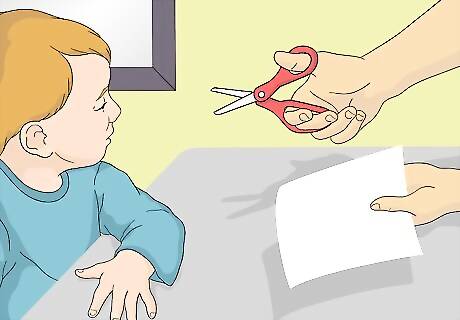
Explain that scissors are only for cutting paper. Fingers, hair, clothing, crayons, and other things are off-limits. If you decide to have the child practice with cutting Play Doh first, you can say that scissors are only for paper and Play Doh. If the child asks about why scissors are used for haircuts, explain "Only adults can use scissors to cut hair, because they have more practice to make sure they don't mess up. Some adults go to a hair cutting school to learn how to do it right, and once they go there, they're allowed to cut hair."
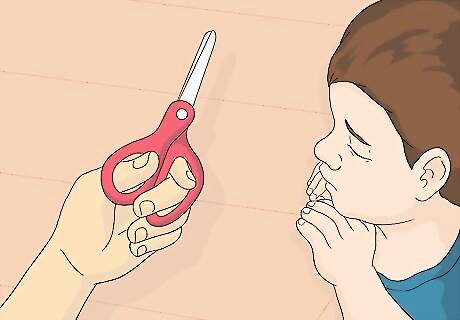
Explain that you need to walk carefully with scissors, if at all. Scissors can hurt people, so it's important to be careful. Some adults forbid walking with scissors at all, while others allow children to do it if the kids are careful. The best way to walk with scissors is to hold the closed blades in the fist. Walking this way reduces the risk of the child playing with the blades while walking, or falling and hurting themselves on the blades. Explain that running with scissors is extremely dangerous. If the child is going too fast, say "Walking feet" to remind them to slow down. Take away the scissors if they continue behaving dangerously.
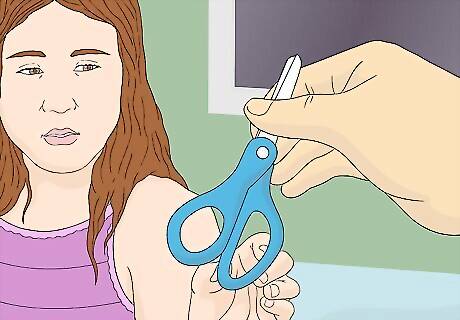
Take away the scissors if the child doesn't follow the rules. Give a reminder, and see if the child listens. If not, then you may decide to take away scissor privileges until the child is ready for another chance. Safety comes first.












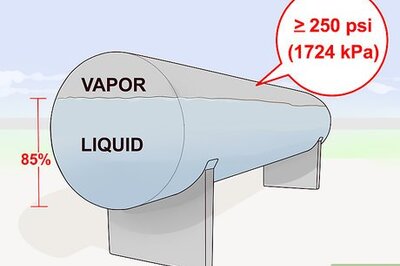





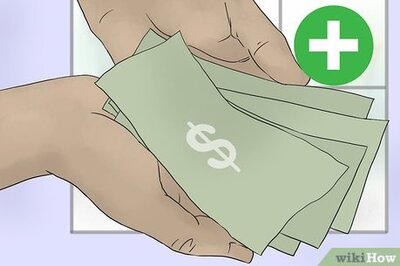
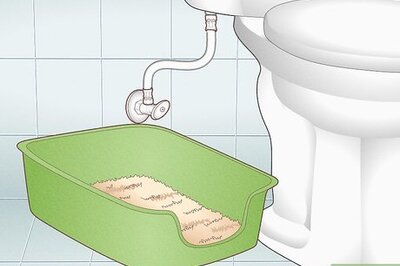
Comments
0 comment